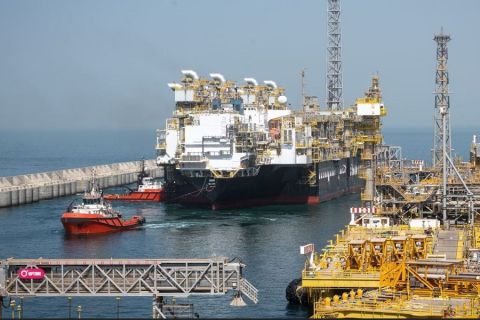
It is time to address the 800-pound gorilla in the room. Oil prices have dropped 16% over the last 90 days, with the decline accelerating as slowing global demand and rising domestic supply displace imported light sweet crude, forcing it back onto the world market.
The global impact from rising U.S. light sweet crude production is evident in the fact that crude prices are falling even as geopolitical events in Iraq, Russia and North Africa disrupt international supply growth. In other words, the oversupply situation could be worse.
The industry might be in for an extended period of sub-$90 oil after word spread in early October that the Saudis had a change of heart and are opting to pursue market share in Asia and Europe. Previously, the Saudis reduced production to defend higher prices.
So what is the potential impact if sub-$90 oil becomes a new normal? Historically, the industry last saw an extended run of sub-$90 oil in the second quarter 2012. Industry response surprised pundits and participants alike. At the time, the discussion among observers was that the breakeven price for oil was in the high $50 to low $60 range. But oil prices in the mid-$80s stopped rig count in its tracks, leading to an oversupply situation in oilfield services that lasted until early 2014.
Hart Energy’s industry revenue model illustrates the impact. The model, based on pricing and production for domestic oil, NGL and natural gas, fell from $28 billion monthly in January 2012 to $22 billion in June 2012. Oil revenues alone registered a 24% decline monthly, peak to trough, and represented a $4.9 billion nominal drop between March and June of 2012.
Extrapolating that model to the current environment indicates an industry better prepared. Oil revenues reached a record $26.2 billion in July 2014, the last month for which full data is available. Indeed, total domestic oil and gas revenue for July 2014 fell just shy of $40 billion. Only four other months witnessed higher revenue. Two of these were in May and June 2014 when the industry recorded revenues above $39.6 billion monthly. The other two were in June and July 2008 when industry revenue topped $41 billion monthly on an average $127 per barrel (bbl) for oil. Revenues eventually fell to $14.3 billion in May 2009 after the financial market collapse.
Oil has since led industry revenue higher on the basis of production volume growth. In July 2008, Lower 48 daily oil production was 4.5 MMbbl. That number was 8.1 MMbbl in July 2014. Oil now represents two-thirds of domestic revenue and exceeds total industry revenues for oil, NGL and gas as recently as third-quarter 2012. Tight formation oil—and high commodity price—has been transformational.
That said, every $1 drop in the price of oil registers as a $290 million decline in monthly industry revenue, or $3.5 billion annually. A sustained market of $85 oil would remove $52 billion in annual revenue, or about 11% below annualized levels of $480 billion based on July 2014 data.
If lower oil prices cause operators to reduce fieldwork, the situation compounds as high decline rates in existing tight formation wells accelerate the drop in revenue over time, leading to even less fieldwork.
When do operators pull back? Breakeven prices are a potential marker, but tend to reflect top performance in a region rather than the average. Coupled with regional price discounts, activity slows long before breakeven is reached. Currently, tight formation breakeven is in the low $60s, while regional differentials are knocking $7 to $10 off posted WTI.
Mitigating factors could soften the blow. Operators have hedged, which will protect activity for a while in a lower price environment. Secondly, the industry has gotten more efficient, though productivity gains in drilling have flattened, according to Baker Hughes' third-quarter well count.
Operators appear to be getting more out of the ground on the basis of enhanced completions. Still, rising costs associated with enhanced completions, coupled with falling revenues from commodity prices, indicate operators will find themselves in a margin squeeze just as they stood on the threshold of positive free cash flow in 2015.
Industry cites technology as the key to improve performance. However, new technology historically has been the tool allowing the industry to cope with deflating commodity prices and keep the gorilla in the room at bay.
For more on pricing and how markets are affecting activity and economics in the Permian Basin, join us at Hart Energy’s
Recommended Reading
Deepwater Roundup 2024: Offshore Australasia, Surrounding Areas
2024-04-09 - Projects in Australia and Asia are progressing in part two of Hart Energy's 2024 Deepwater Roundup. Deepwater projects in Vietnam and Australia look to yield high reserves, while a project offshore Malaysia looks to will be developed by an solar panel powered FPSO.
BP: Gimi FLNG Vessel Arrival Marks GTA Project Milestone
2024-02-15 - The BP-operated Greater Tortue Ahmeyim project on the Mauritania and Senegal maritime border is expected to produce 2.3 million tonnes per annum during it’s initial phase.
Deepwater Roundup 2024: Offshore Africa
2024-04-02 - Offshore Africa, new projects are progressing, with a number of high-reserve offshore developments being planned in countries not typically known for deepwater activity, such as Phase 2 of the Baleine project on the Ivory Coast.
Barnett & Beyond: Marathon, Oxy, Peers Testing Deeper Permian Zones
2024-04-29 - Marathon Oil, Occidental, Continental Resources and others are reaching under the Permian’s popular benches for new drilling locations. Analysts think there are areas of the basin where the Permian’s deeper zones can compete for capital.
Technip Energies Wins Marsa LNG Contract
2024-04-22 - Technip Energies contract, which will will cover the EPC of a natural gas liquefaction train for TotalEnergies, is valued between $532 million and $1.1 billion.





